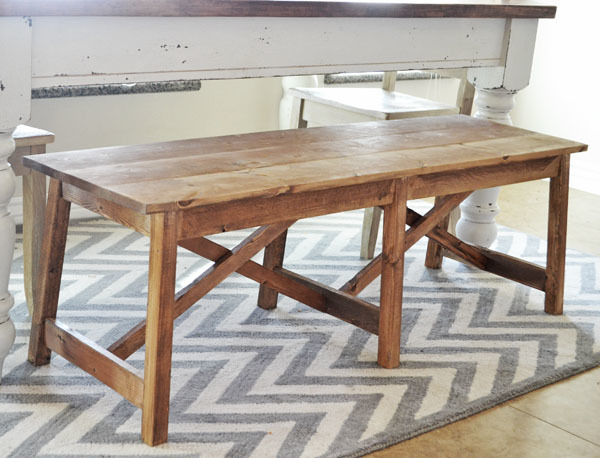
Double X Bench free plans from Ana-White.com
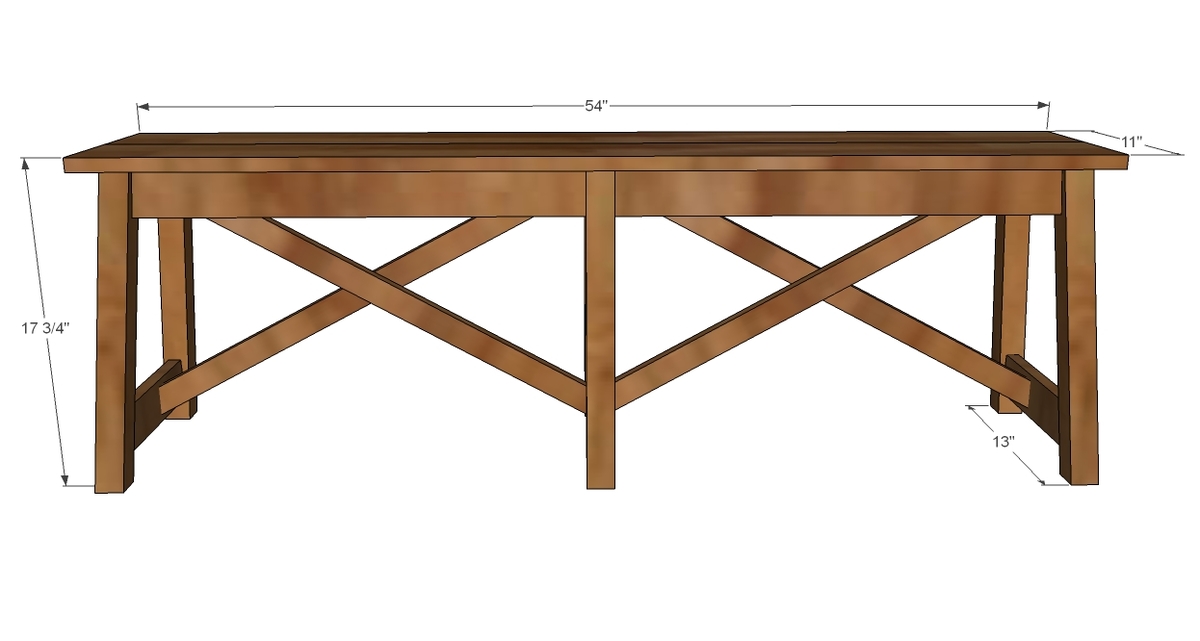
Preparation
1 - 2x2 12 feet long
3 - 1x3 @ 8 feet long
2 - 1x2 @ 8 feet long
1 - 1x6 @ 10 feet long
4 - 2x2 @ 17 1/8" long - Outside Legs (both ends cut at 5 degrees double bevel off square, ends ARE parallel to each other)
2 - 2x2 @ 17 1/8" long - Inside Legs (both ends cut at 5 degrees off square, ends ARE parallel to each other)
3 - 1x3 @ 7 1/2" long - End Aprons (both ends cut at 5 degrees off square, longest point measurement, ends NOT parallel)
3 - 1x3 @ 9 3/4" long - Stretchers (both ends cut at 5 degrees off square, longest point measurement, ends NOT parallel)
4 - 1x3 @ 23 1/2" long - Side Aprons (ONE end cut at 5 degrees off square, longest point measurement)
1x2 cross supports cut to fit
2 - 1x6 @ 54" long - Tops
Please read through the entire plan and all comments before beginning this project. It is also advisable to review the Getting Started Section. Take all necessary precautions to build safely and smartly. Work on a clean level surface, free of imperfections or debris. Always use straight boards. Check for square after each step. Always predrill holes before attaching with screws. Use glue with finish nails for a stronger hold. Wipe excess glue off bare wood for stained projects, as dried glue will not take stain. Be safe, have fun, and ask for help if you need it. Good luck!
Instructions
Step 1
Step 2
Step 3
Step 4
It is always recommended to apply a test coat on a hidden area or scrap piece to ensure color evenness and adhesion. Use primer or wood conditioner as needed.


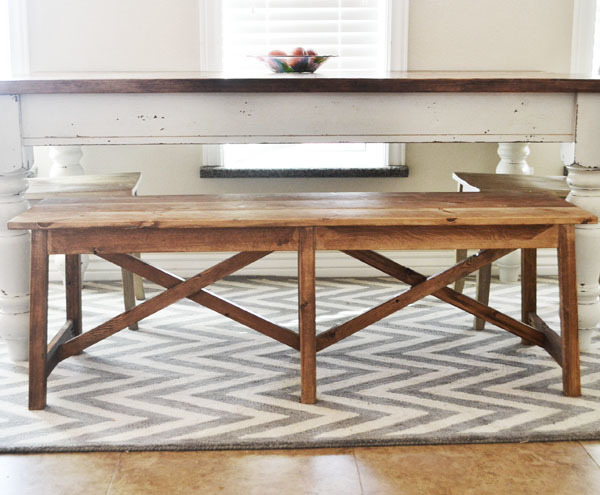
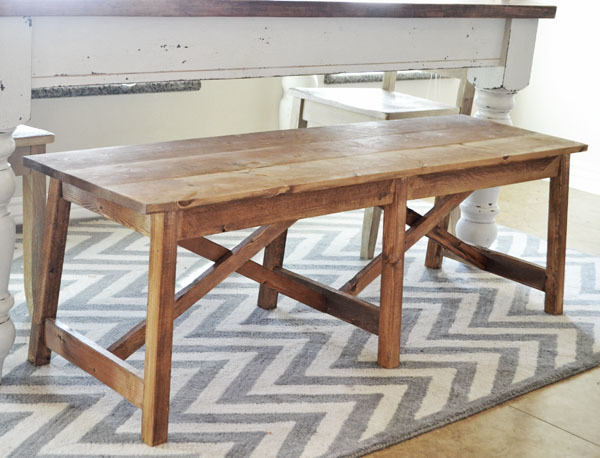
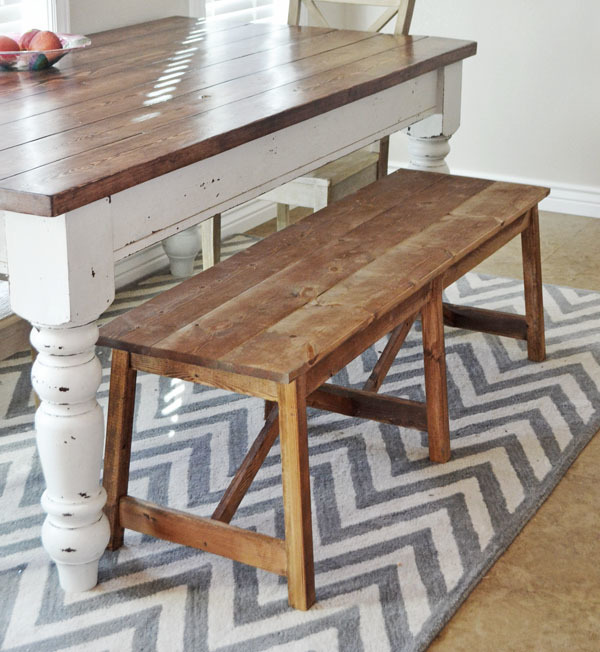
















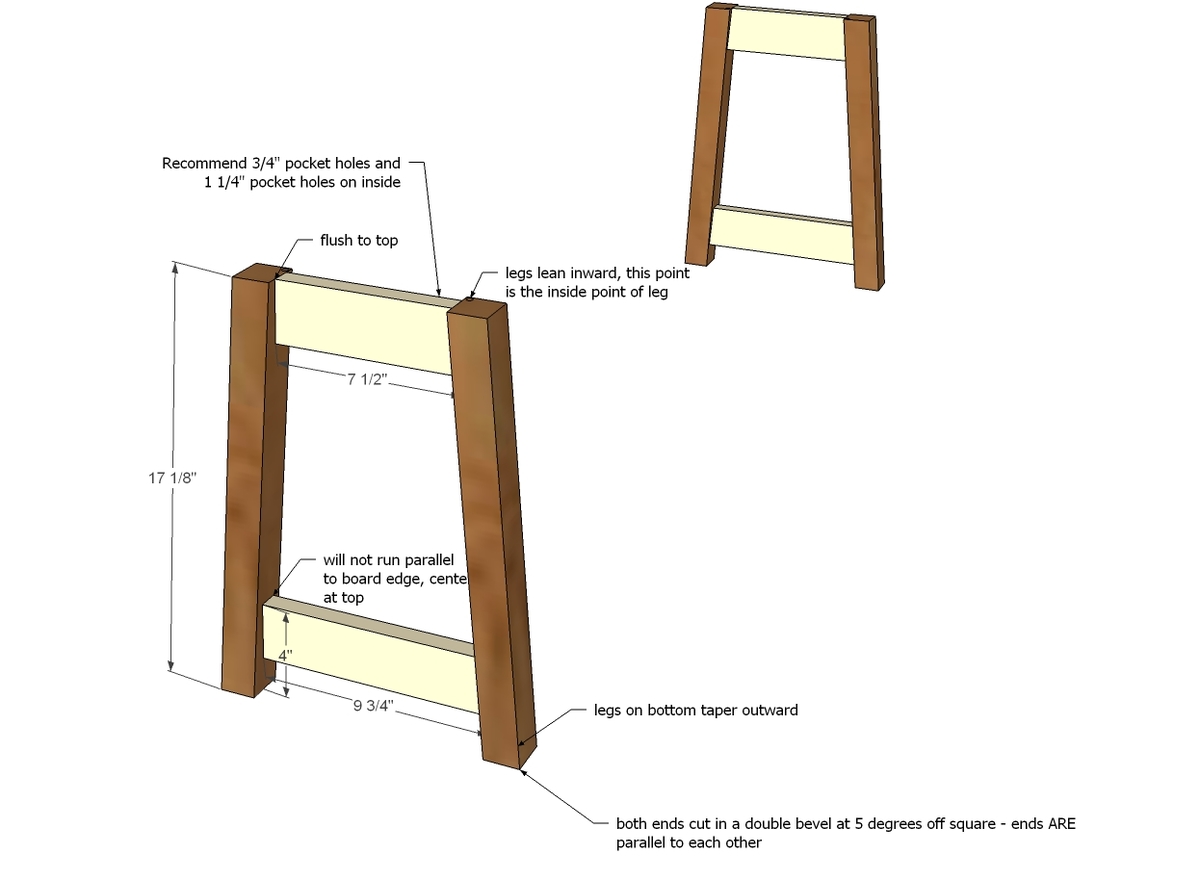

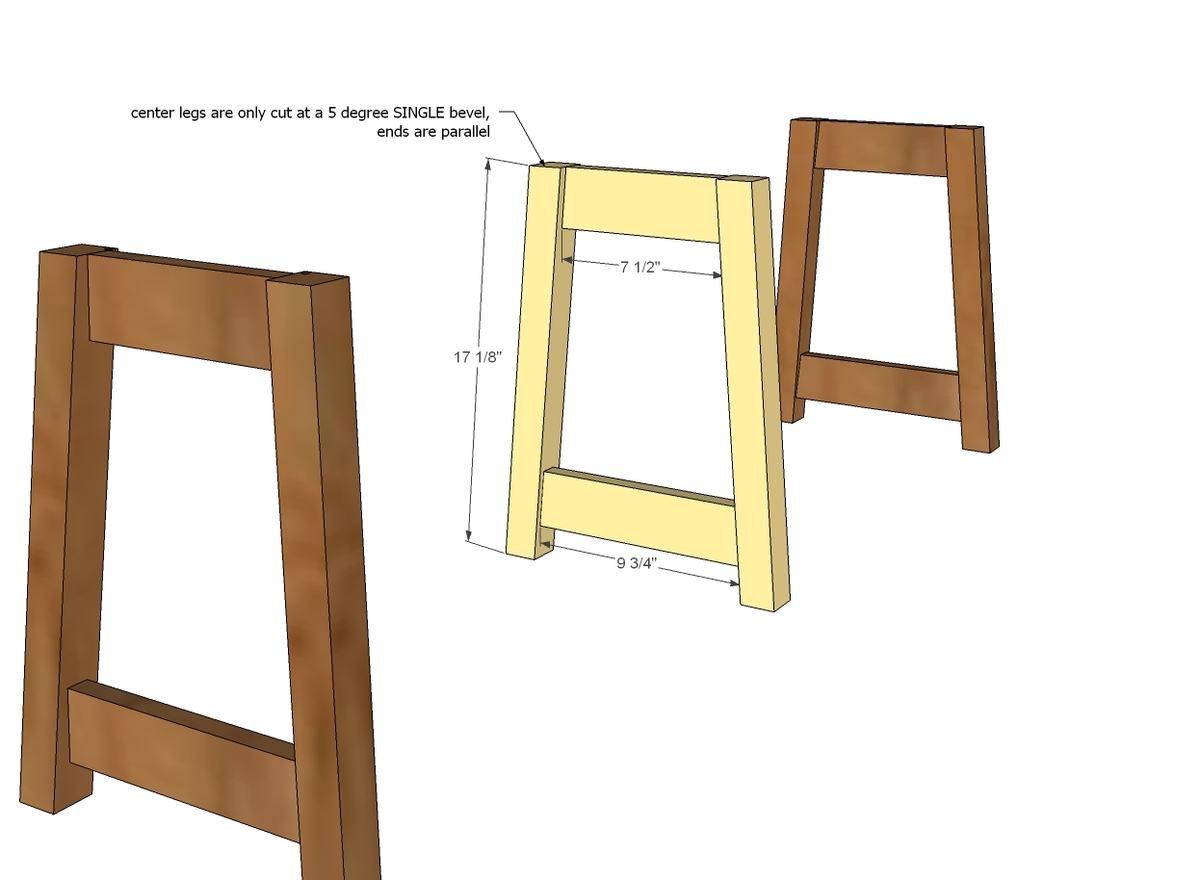
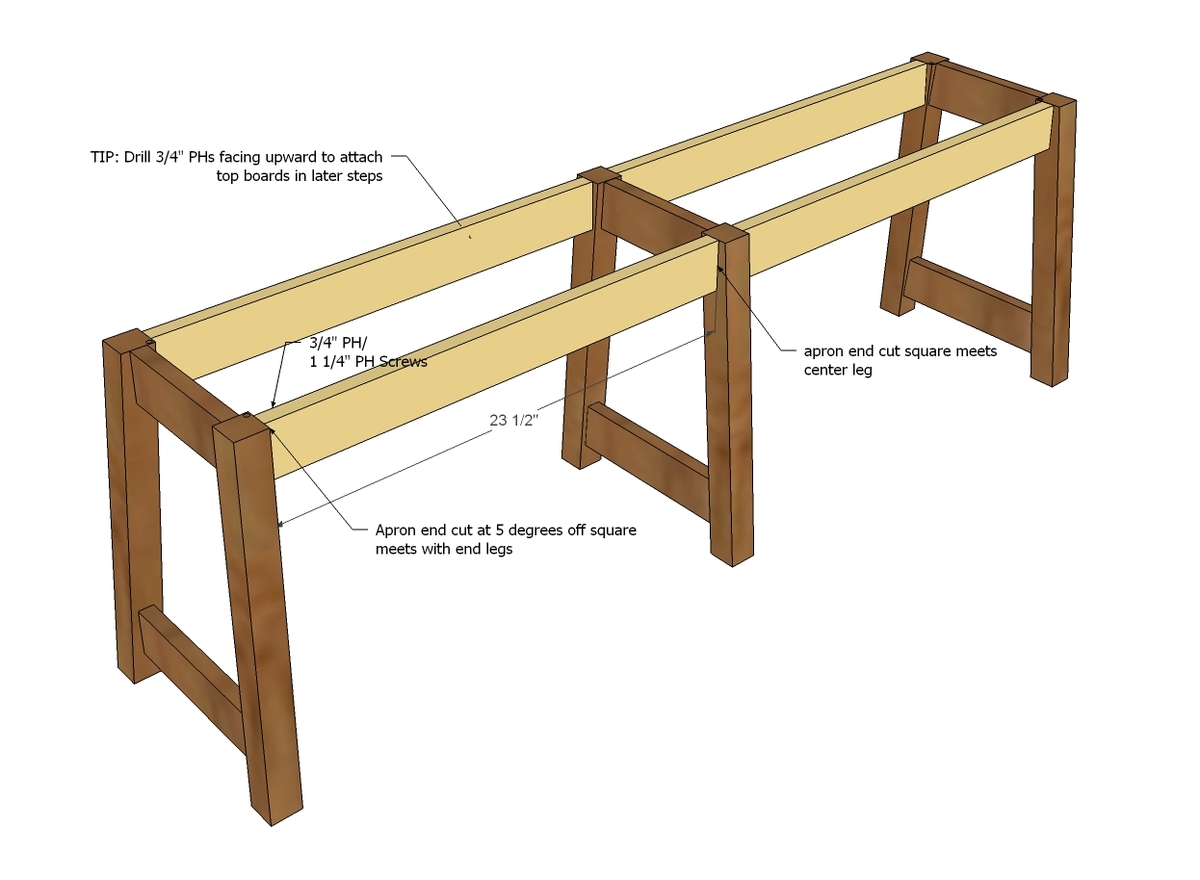
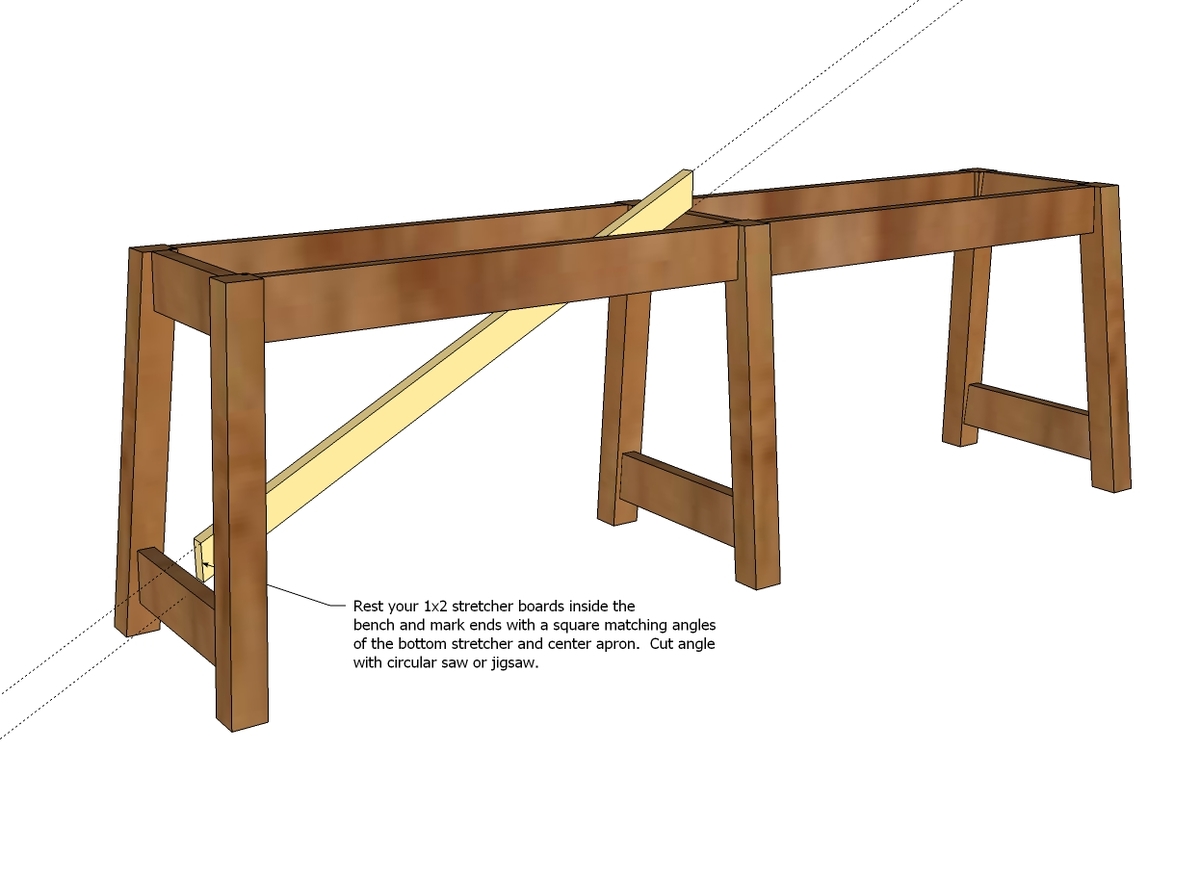
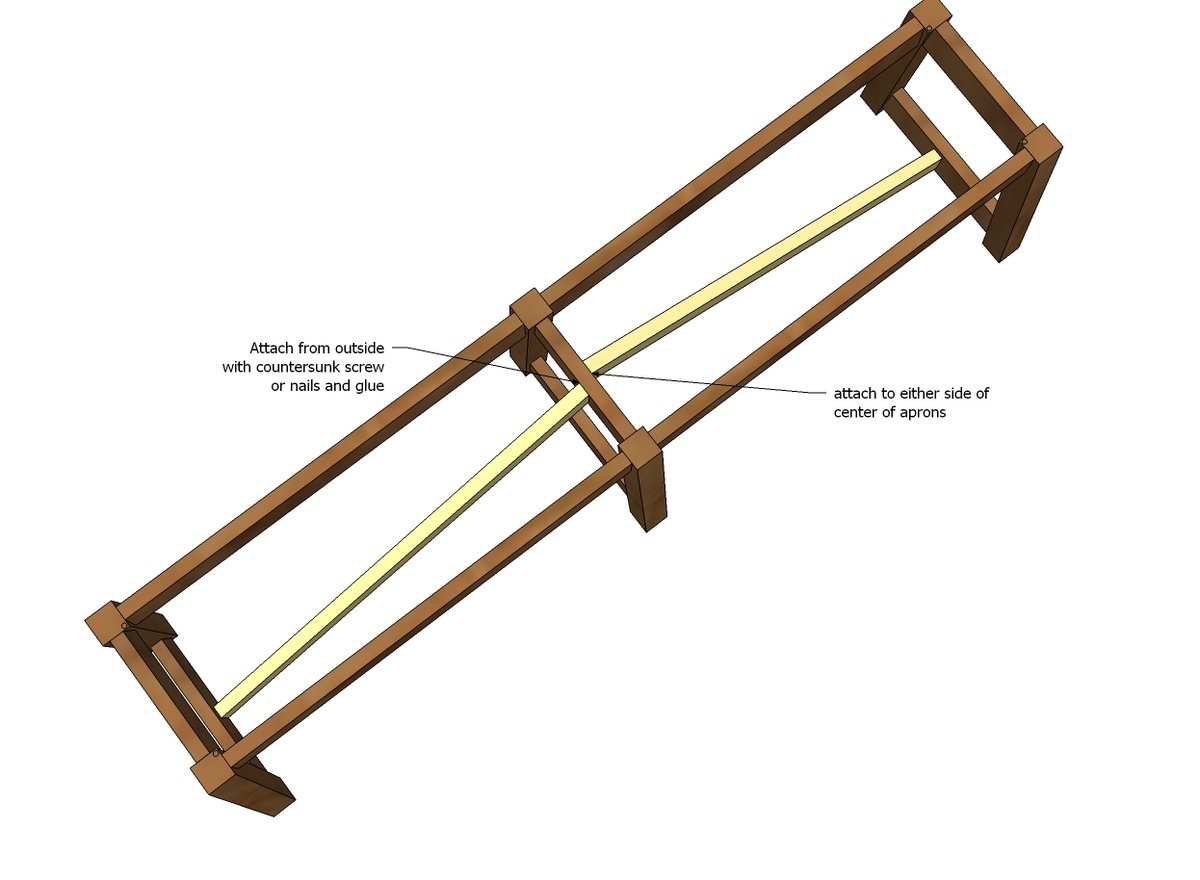

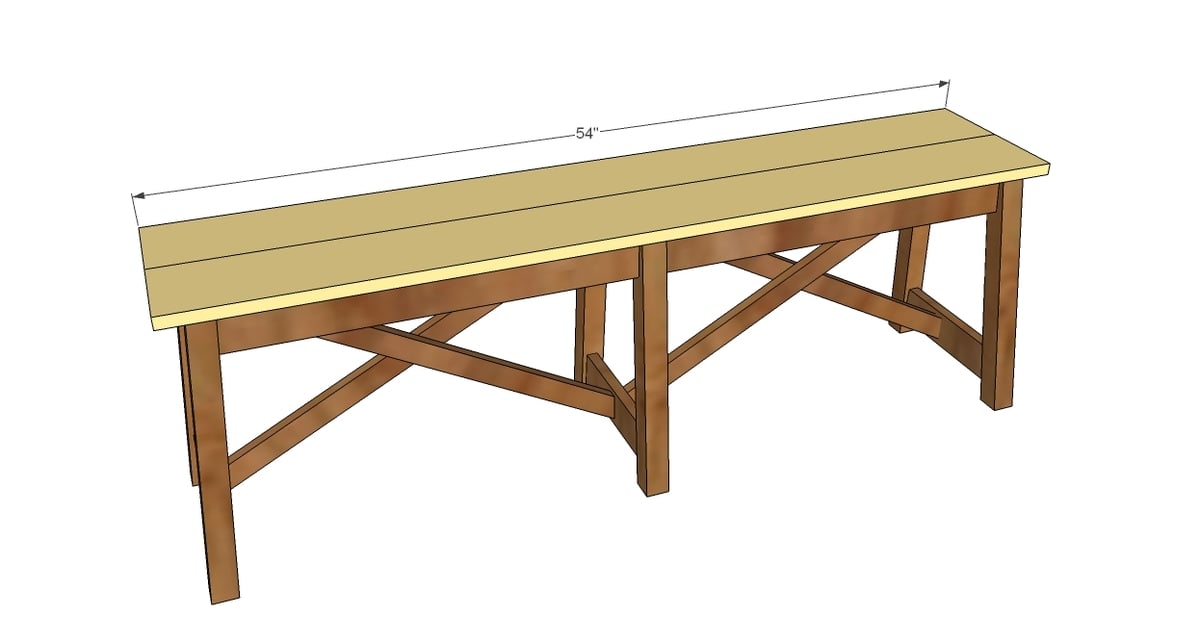
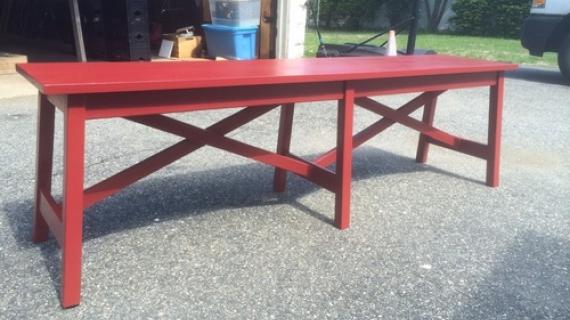
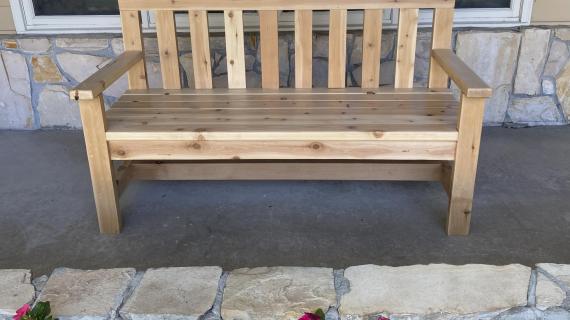

Comments
bwertz
Tue, 06/04/2013 - 08:28
Original Post
In your original post for the husky farmhouse table you mentioned following up with a blog on the finish for the legs. I really want to duplicate this look and can't find that post. Can you please point me in the right direction?
bwertz
Tue, 06/04/2013 - 08:44
Original Post
In your original post for the husky farmhouse table you mentioned following up with a blog on the finish for the legs. I really want to duplicate this look and can't find that post. Can you please point me in the right direction?
bwertz
Thu, 06/06/2013 - 05:57
well..
thats embarrassing - found it hiding in plain sight
Maggie Jaye
Sun, 06/16/2013 - 14:31
Very beautiful! I have to ask
Very beautiful! I have to ask where you bought that chevron rug from? I'm in love with it!